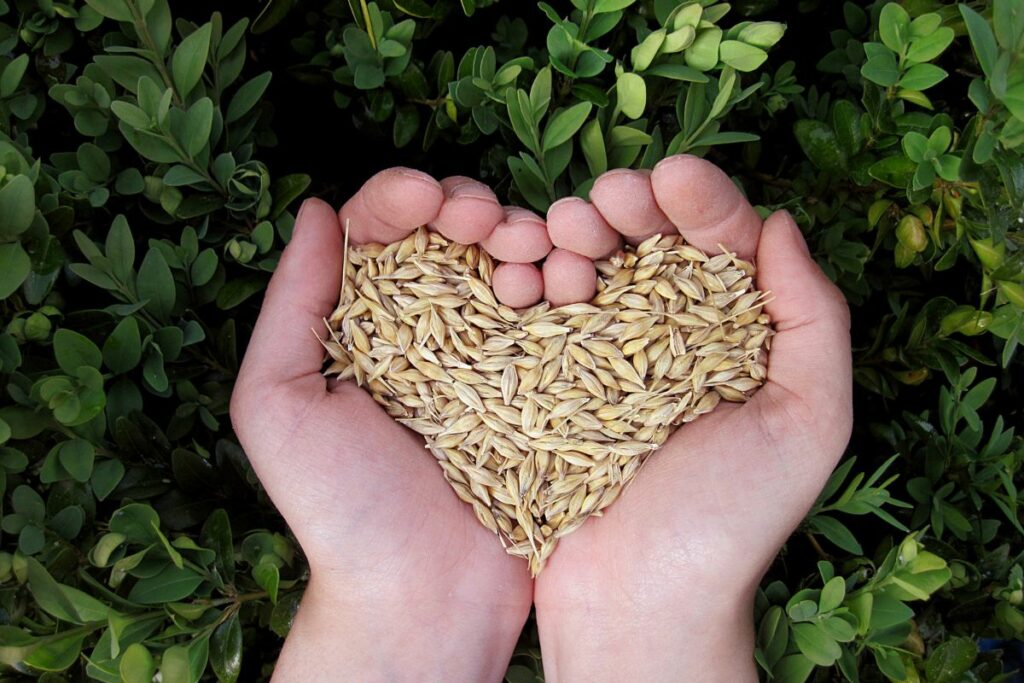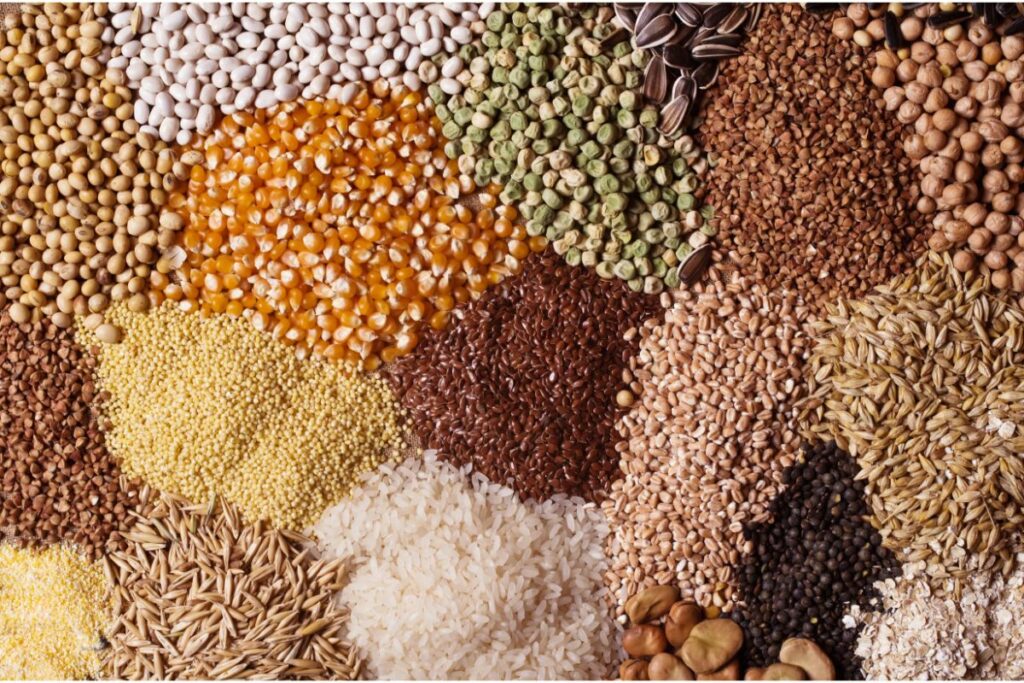Are you looking for a healthier alternative to sugary cereals and pastries for breakfast? Looking for the perfect grain that is nutritionally dense and can start your day off right?
Well, today I’m going to be going through the healthiest breakfast grains to determine which is the healthiest breakfast grain out there.
Breakfast is the most important meal of the day and what you eat during the morning hours has an impact on your energy levels, cognitive function, and overall health for the rest of the day.
Eating healthy grains for breakfast can provide you with many vitamins, minerals, and other nutrients that are essential for a balanced diet.
Grains are a great way to get protein and fiber in your diet to start off the day. But when it comes to selecting healthy grains for breakfast, there are certain options that stand out above others.
Here is a list of some of the healthiest breakfast grains available today.
What Are The Healthiest Breakfast Grains?
Quinoa
You may think oatmeal is the only hot cereal you need to kick-start your day. Think again.
This nutty-tasting ancient super seed native to the Andes Mountains of Bolivia and Peru boasts roughly 8 grams of solid protein in every cup. With even more fiber than oats, it’s a nutritional powerhouse.
Also, sometimes it’s nice to have an alternative cereal or grain that you can rely on other than your usual grains. Changing it up sometimes is better.
Amaranth
While amaranth stayed in the background throughout the 20th Century, today it is enjoying a resurgence. Give the grain a go to enjoy its nutty flavor and numerous health benefits.
Amaranth contains the essential types of amino acids, which as a result, makes it one of few plant sources of solid protein – an important factor for vegans and vegetarians looking to meet their bodies’ nutritional requirements with plant-based proteins.
Get even more out of your pseudocereal meal by adding nuts or fruit for additional bulk to your bowlful!
Polenta
Ever heard of cornmeal mush or polenta? Yes, please! While you may be familiar with the dish by its traditional Italian name, it’s usually called oatmeal which is boiled in Swiss, and Italian households.
This dish is usually eaten cold or hot, so the choice is yours, and then it can be even sliced, grilled, or baked, there are plenty of ways you can enjoy the dish.
Many think that it can be high maintenance due to its reputation as a grain since there are numerous variations of the recipe, and it definitely requires some attention while cooking.
To make your own polenta at home, start by bringing 4 1/2 cups of plain water over a gentle boil over medium-high heat in a heavy saucepan, with 4 teaspoons of salt added.
Next, slowly whisk 1 cup of cornmeal into the boiling water. Keep stirring so the mixture does not stick to the bottom of the pan — usually about 20 minutes!
Millet
Ever heard of millet? You might recognize it as the common birdseed, but the grain actually has more than one hundred uses in countries all around the world.
From India to Ethiopia, millet is commonly used for a variety of dishes including porridge, bread, soups, and even infant foods. But what exactly is it?
Millet is an ancient grain dating back to ancient Rome, where it was used in porridge. In Ethiopia and India, this grain was usually ground traditionally down and used to make flatbreads.
Kamut
The mysterious ancient grain known as Kamut has been credited with various mythical origins, from having been found in the tombs of Egyptian Pharaohs to being presented as a gift from the gods.
It has also been referred to by various romantic names—King Tut’s Wheat, Prophet’s Wheat, and Pharaoh’s Grain—giving it a regal aura.
Made from Khorasan wheat, Kamut is sometimes called an heirloom grain because it more closely resembles wheat grown over 5,000 years ago than it does the wheat we eat today.
The grains are pretty hefty (at least for grains) and twice the size of a basic wheat kernel.
They can be cooked similarly to other grains, but have distinct nutrition benefits that compare favorably against other whole grains.
Buckwheat
Buckwheat is a triangular seed that has been known to be related to types of rhubarb and is a staple in Eastern Europe.
Its roasted oats are especially popular and are enjoyed with onions, milk, and sometimes even mushrooms that have been sautéed as a simple side dish.
Buckwheat is not only incredibly versatile but also contains a number of essential vitamins, minerals, fiber, and plant proteins – making it an excellent choice for those looking to reduce their red meat consumption while still getting an adequate protein boost.
Brown Rice
The great thing about cooking brown rice is you can use it as a base with just about any flavor. And don’t be afraid to turn those leftover ingredients into breakfast — yes, for real.
Brown rice for breakfast is great for using up leftovers!
Bring a cup of rice in water to a boil and make sure to reduce the heat as you go, so it simmers for 6 or 7 minutes. When it thickens, this is when it’s done.
Next, you can customize what you want to add. Maybe you’ll opt for some fresh vegetables, cooked shrimp, or pulled chicken? Or some fried eggs and a smidgen of hot sauce? Let your kitchen creativity rock out!

Oats
Oats contain more protein than other grains like wheat or barley, but the quality of this protein is lower than that found in legumes such as beans and lentils.
Oats are an incredibly nutritious cereal grain that offers numerous health benefits. Oats provide a source of several essential vitamins and minerals, as well as dietary fiber.
Oats can be fortified during the rolling process, but this adds additional minerals and vitamins to enhance their nutritional profile. Fortified products typically contain more calcium, iron, zinc, and B vitamins than unfortified ones.
Muesli
This homemade muesli is crunchy and nutty, and best enjoyed with milk or yogurt and some fresh fruit for sweetness. Plus, it’s easy to make using simple ingredients that you may already have on hand!
Muesli is a healthy type of breakfast cereal that’s both delicious and nutritionally dense.
It typically consists of rolled oats, nuts, seeds, and dried fruits.
If you’re looking for a nutritious way to start your day, consider making your own batch of muesli at home!
Granola
If you’re one of the many people searching for cereal options beyond the standard sugary brands, look no further than homemade granola.
Not only is there an unlimited combination of ingredients available, but it can also provide several health benefits.
You may need to consider the fact that a good deal of granola is higher in calories compared to other grains.
But these are healthy calories, so it depends on your goals overall. It’s all about having a steady and controlled portion to get the best out of these grains in your diet if you want to try out granola.
What Is The Healthiest Breakfast Grain Of All?
Good old-fashioned oats cooked into porridge, or oatmeal as we call it! When it comes to a healthy, hearty breakfast, oatmeal is the perfect solution.
Not only is it easy to make, but it’s packed full of vitamins and minerals, as well as being one of your five-a-day!
There are usually no added sugars or salts in oats which is why it’s such a popular grain for people to consume for breakfast.
These qualities make it reliable and healthy for your mind and body to enjoy the nutrients straight from a natural grain that was designed to keep you going throughout the day.
Many people add sweet fruits to their oatmeal to sweeten it up and change the overall texture of their breakfast.
So why not try this out today for yourself to find out exactly why porridge is so oatmeal in the first place?
You won’t regret it when it becomes your favorite new grain to enjoy every day or most days, considering how effortless it is to prepare every single time you want to make it.
Final Thoughts
Overall, oatmeal is the healthiest breakfast grain. It is packed full of vitamins and minerals, contains no added sugar or salt, and can help lower your cholesterol level.
Plus, it’s easy to make and can be enjoyed with a variety of toppings for extra flavor. So next time you’re looking for a healthy breakfast option, consider making yourself some porridge!
We hope that this article has provided you with the answers as to what the healthiest breakfast grains are and why.
Porridge can be so delicious if prepared correctly, and the thicker it is, the better the texture and taste overall in our opinion!








